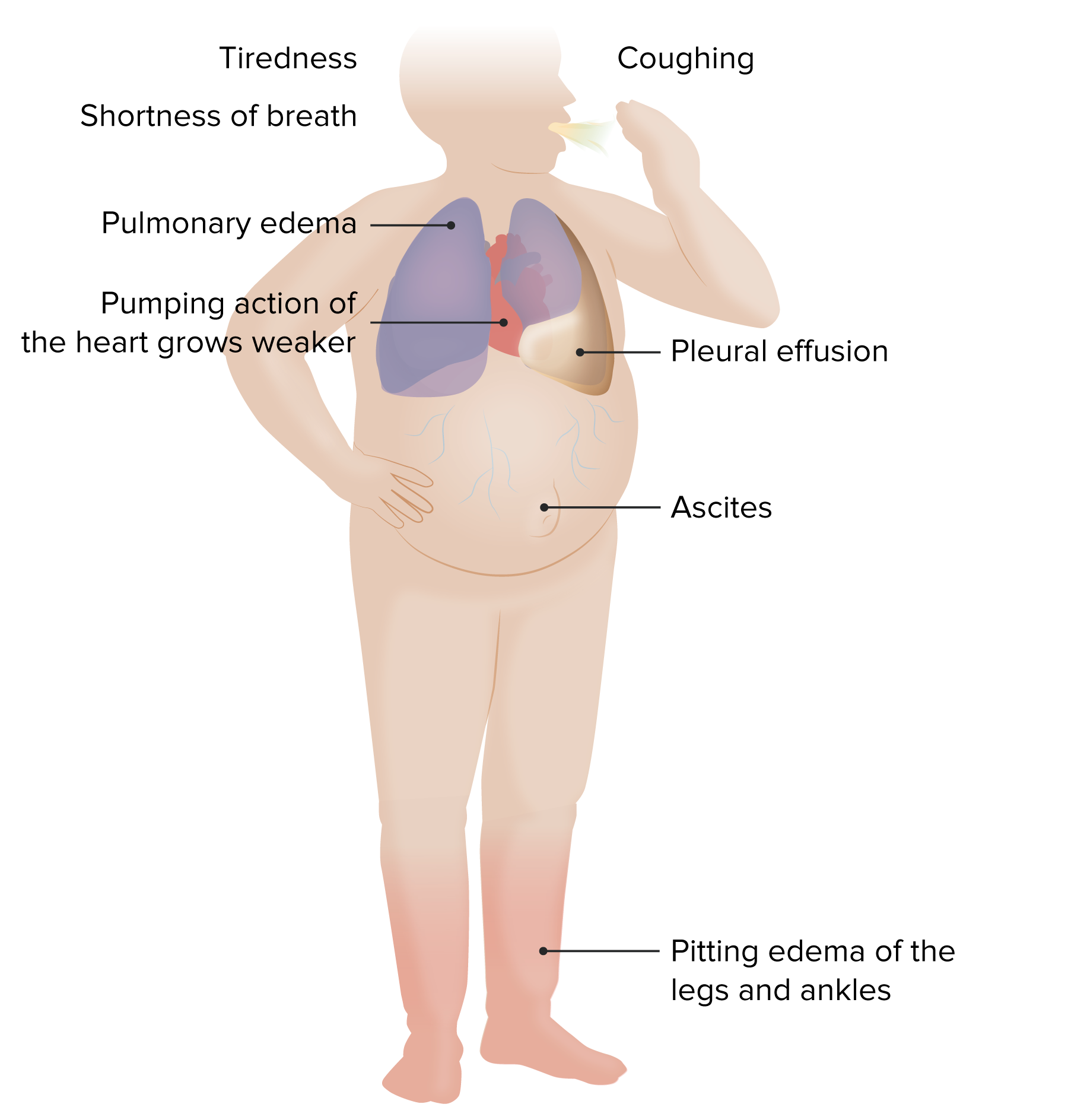Playlist
Show Playlist
Hide Playlist
Heart Failure: Epidemiology and Patterns of Hypertrophy
-
Slides Heart Failure.pdf
-
Reference List Pathology.pdf
-
Download Lecture Overview
00:00 So, what does this look like? It's a very prevalent disease. Heart failure occurs in 1-2% of the population and becomes much much more common as that population ages. 00:14 It's said to be 25% higher in the African American population. The mechanisms for this are not entirely clear to me, not have a genetic basis. It may actually reflect in part access to healthcare and prevention of some of the maladaptive changes. As I've already mentioned, the incidence and prevalence of heart failures deeply increases with age and this is going to be a major mode of exodus, meaning cause of death for a significant number of the geriatric population in any country of the world. So we have different manifestations of heart failure. You can have left-sided heart failure which is going to be the most common one, the left heart is going to be very important for perfusing every organ except the lung and that left heart failure is going to be reflected relatively quickly. At the left heart, the left ventricle is not squeezing appropriately or filling appropriately or providing adequate stroke volume appropriately, then you're going to have many more manifestations. So this is going to be more common probably even isolated right-sided heart failure. So, you have inadequate systemic perfusion. 01:26 So the brain is not getting enough oxygen. The kidneys are not getting enough flow, so they're going to be manifestations there. Not only that, but as the heart is dilating up, we are also affecting the geometry of the valves and we're affecting their competence. So with a dilated heart, for example, in left heart failure that has gone beyond the limits, we are now dilating that chamber of the left ventricle pulling on the chordae tendineae attached to the papillary muscles and now we will have regurgitation into the left atrium and back through the pulmonary veins into the lungs. So there will be increased pulmonary pressure and pulmonary edema associated with left heart failure. 02:08 Right-sided heart failure is going to give us inadequate pulmonary perfusion so the patients will present with hypoxia and hypotension, they are not getting enough blood going to the lungs to get oxygenated and because we don't have adequate blood flow going through the lungs we don't have enough adequate blood flow coming out of the lungs and so there will be hypotension. So right-sided heart failure has a couple of additional things. We will see with right-sided heart failure that there is increased venous pressure systemically. Same mechanisms that are going on when we have pulmonary edema associated with left heart failure, we can have the same thing happening with right heart failure with as pressure and volume going regurgitantly in to the systemic venous circulation. And that will give rise to peripheral edema, an important truism. 03:07 The most common cause of right heart failure is left heart failure, it's not the only cause, but the most common cause is going to be left heart failure and that's because the left heart fails more frequently than the right and the left when it fails has blood pumping retrograde into the lungs that higher pressure and volume through the lungs translates back into the right ventricle. Now we have pressure volume overload on the right ventricle which will lead to right heart failure. Both types of heart failure can be caused by either systolic or diastolic failure.
About the Lecture
The lecture Heart Failure: Epidemiology and Patterns of Hypertrophy by Richard Mitchell, MD, PhD is from the course Heart Failure.
Included Quiz Questions
What is a risk factor for heart failure?
- Increasing age
- No history of smoking
- Caucasian race
- Iodine contrast exposure
- Crohn's disease
What is the most common cause of right-sided heart failure?
- Left-sided heart failure
- Ischemic heart disease
- Valvular heart disease
- Third-degree heart block
- Pulmonary hypertension
Customer reviews
5,0 of 5 stars
| 5 Stars |
|
5 |
| 4 Stars |
|
0 |
| 3 Stars |
|
0 |
| 2 Stars |
|
0 |
| 1 Star |
|
0 |




